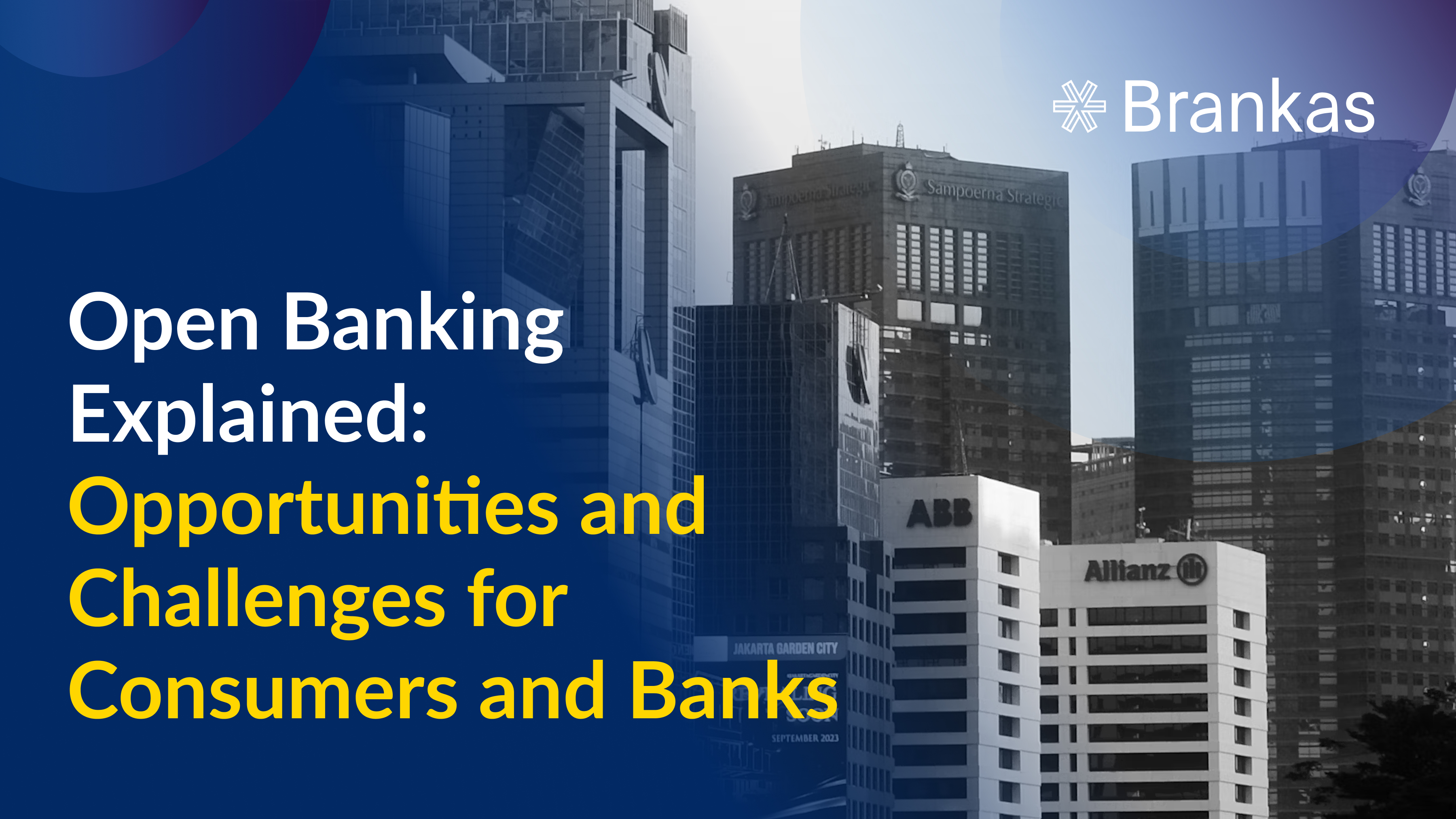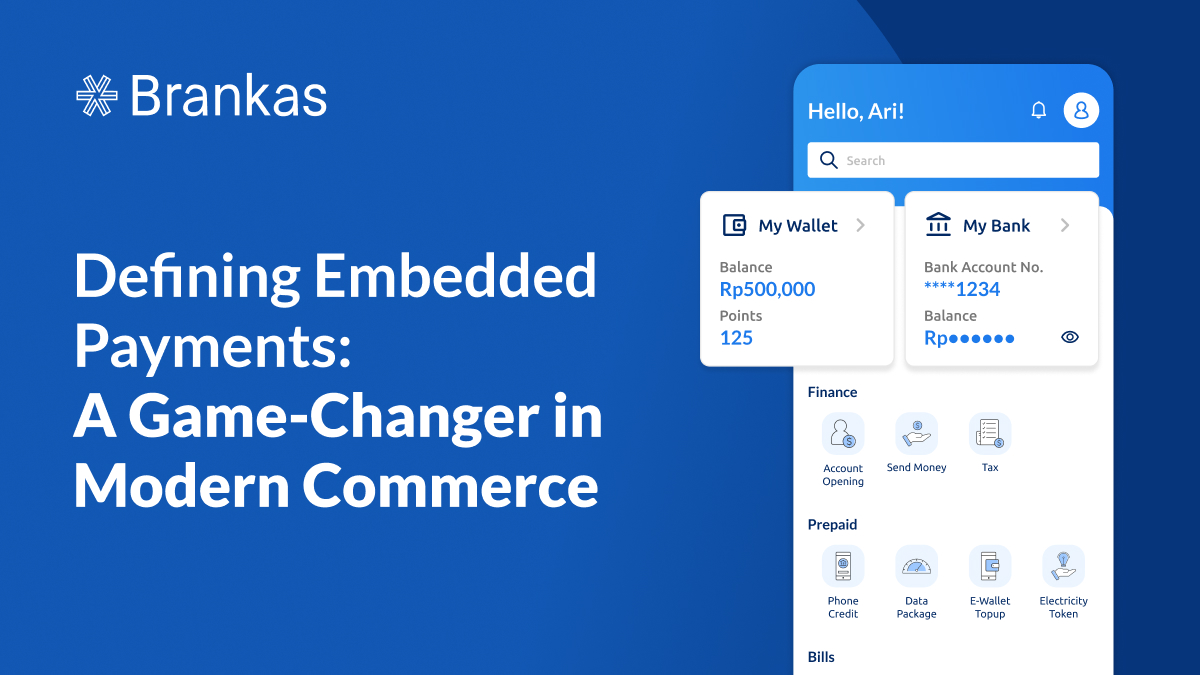Everything Businesses Need to Know About Payment Reversal
Understanding the intricacies of payment transactions is crucial for enterprises aiming for sustained success. At the heart of these transactions lies a concept that every merchant should be well-versed in–payment reversals. Payment reversals encompass a spectrum of scenarios. And each carries distinct implications for merchants. This article aims to equip business owners with the knowledge needed to proactively manage and mitigate the impact of payment reversals on their operations.
Understanding Payment Reversals
Payment reversals refer to the cancellation or alteration of a prior authorized transaction. They come in different forms, each serving a distinct purpose for merchants and consumers.
1. Authorization reversal
Authorization reversal, also known as voiding or canceling an authorization, is the process of revoking a hold on funds before the actual transaction is completed or settled. It occurs when a customer decides not to proceed with the purchase or if an issue is detected during the authorization phase.
Imagine a customer using their credit card to make a hotel reservation, and they decide to cancel the reservation before the check-in date. The hotel initiates an authorization reversal to release the initially held funds.
Reversing an authorization is better for businesses because they do not have to pay certain fees linked to refunds, making things more cost-effective. It also means merchants do not need to deal with any problems related to returning an order since the transaction has not been finalized yet.
2. Payment refund
A payment refund involves the return of funds to the customer after a successful transaction. Refunds are typically initiated by the merchant and are often associated with product returns, cancellations, or situations where the customer is owed a reimbursement.
If a customer purchases a defective product online and requests a refund, the merchant processes a payment refund to credit the customer’s account.
Payment refunds take time compared to authorization reversals. Your payment processor treats it as a distinct transaction, essentially reversing the original payment. They deduct the money from your account and return it to the customer’s original payment method. This procedure typically takes anywhere from three to 10 business days. The additional expenses of payment refunds include lost sales, interchange fees, return shipping costs, and so on. These costs can add up over time.
3. Chargeback
Chargeback is a forced reversal of a transaction initiated by the customer through their bank or credit card issuer. Chargebacks are typically associated with disputes, fraud, unauthorized transactions, or dissatisfaction with the product or service.
A customer notices a charge on their credit card statement that they did not authorize. They contact their bank, which investigates the claim. If found valid, the bank initiates a chargeback, reversing the transaction and crediting the customer.
Chargebacks bring considerable challenges, such as chargeback fees, revenue and merchandise losses, sales cannibalization, shipping costs, interchange fees, and potentially other penalties depending on the specific circumstances and your chargeback rate. Credit card chargebacks follow a rigorous process and strict timelines. Failure to adhere to these strict procedures can spell trouble for your business.
How Payment Reversals Differ from Chargebacks
Payment reversals, including authorization reversals and refunds, are typically initiated by the merchant or customer and are part of standard transaction processes. Chargebacks involve a dispute initiated by the customer, often due to fraud, errors, or dissatisfaction.
Common Causes of Payment Reversals
Understanding these common causes allows entrepreneurs to implement preventive measures and minimize the risk of payment reversals.
1. Disputes and chargebacks
Customer disputes, often resulting in chargebacks, can occur for various reasons, including dissatisfaction with a product or service, billing errors, or misunderstandings.
A customer might dispute a charge if they receive a damaged product or if they believe they were billed incorrectly. Chargebacks initiated by the cardholder or the issuing bank can lead to a reversal of the payment, and merchants need to address these disputes effectively.
2. Technical and processing issues
Technical glitches, errors in processing, or system malfunctions can also contribute to payment reversals.
A merchant may need to reverse one of the transactions if a customer’s payment is processed twice due to a system error. Technical issues can lead to unintended double charges, making it crucial for businesses to monitor and address such errors promptly.
3. Fraudulent transactions
When unauthorized individuals gain access to sensitive payment information, they can make purchases without the card holder’s consent. Merchants may later discover these unauthorized transactions and initiate chargebacks to reverse the payment.
If a fraudster obtains someone’s credit card details and makes online purchases, the legitimate cardholder might dispute these charges, leading to a reversal.
Why Payment Reversals Matter to Businesses
Understanding the implications of payment reversals allows companies to implement strategies to minimize their occurrence and effectively manage the aftermath.
Impact on cash flow
When a transaction is reversed, the funds that were initially received are deducted from the merchant’s account. This sudden reduction in cash inflow can disrupt the company’s financial stability and affect its ability to meet immediate financial obligations. For example, if a business experiences a high volume of chargebacks, it may face cash flow challenges, making it harder to cover operational expenses.
Repercussions for merchants
Merchants face various repercussions due to payment reversals, including financial losses, additional fees, and potential damage to their reputation. For instance, chargebacks often come with fees imposed by payment processors and banks. Merchants may face higher processing fees or even the suspension of their merchant accounts if the number of chargebacks exceeds a certain threshold. This can be particularly challenging for small businesses operating on tight profit margins.
Relationship with customer satisfaction
Payment reversals can have a direct impact on customer satisfaction. If a customer experiences difficulties obtaining a refund for a defective product, it can lead to dissatisfaction and harm the business’s reputation. On the other hand, prompt and hassle-free refunds can enhance customer trust and satisfaction. Striking the right balance between addressing payment issues and maintaining positive customer relationships is crucial for long-term success.
Technology and Payment Reversals
Technology plays a pivotal role in mitigating payment reversals by enhancing the security, efficiency, and accuracy of financial transactions. Secure payment gateways and advanced encryption technologies protect sensitive customer information, reducing the risk of fraudulent transactions. Real-time monitoring and fraud detection tools enable businesses to identify and address potential issues promptly.
Automation and machine learning contribute significantly to minimizing payment reversals. Automated systems can flag suspicious transactions, trigger authentication processes, and even prevent certain transactions based on predefined criteria. Machine learning (ML) algorithms analyze vast amounts of transaction data to identify patterns indicative of fraud or potential disputes. This proactive approach allows businesses to intervene before reversals occur.
Numerous businesses have successfully implemented technology-driven solutions to reduce payment reversals. Major e-commerce platforms Amazon, Alibaba, and Shopify leverage machine learning (ML) algorithms. These fraud detection algorithms can identify anomalies and automatically block or flag transactions for further review, preventing potential chargebacks. JP Morgan Chase and Citibank adopted real-time transaction monitoring, which has proven effective in identifying and preventing fraudulent activities, and reducing instances of unauthorized chargebacks.
The Human Element in Payment Reversals
The human element in payment reversals involves not only addressing issues when they arise but also proactively equipping customer service teams and educating customers.
Training customer service teams
One crucial aspect of managing payment reversals involves training customer service teams. These teams serve as the frontline in resolving disputes and addressing customer concerns. Comprehensive training equips customer service representatives with the knowledge and skills to navigate complex payment issues. This includes understanding the intricacies of different payment reversal scenarios, the company’s policies, and effective communication strategies.
Empathy in resolving disputes
Empathy plays a pivotal role in resolving payment disputes. Customers experiencing issues, whether due to fraud concerns, billing discrepancies, or other reasons, seek understanding and support. Customer service representatives trained to approach disputes with empathy can defuse tense situations, build rapport, and collaboratively work toward a resolution. Empathy fosters a positive customer experience, even in challenging situations, which can contribute to customer retention.
Customer education initiatives
Proactive customer education is an essential component of mitigating payment reversals. Many disputes arise from misunderstandings or lack of awareness regarding transaction processes, billing cycles, or security measures. Businesses can implement initiatives to educate customers on how transactions work, what to expect in various scenarios, and steps to take if they encounter issues. This preemptive education can significantly reduce confusion and the likelihood of disputes.
Merging Technology and the Human Element
Integrating technology and the human element is paramount for minimizing payment reversals. Technological advancements play a pivotal role in identifying and preventing potential issues that could lead to reversals. Automated systems equipped with machine learning algorithms can swiftly detect anomalies, suspicious transactions, or patterns indicative of fraudulent activities, thereby providing a proactive defense against payment reversals.
The human element is essential for nuanced decision-making and addressing complex customer issues. While technology can handle routine tasks efficiently, human intervention becomes crucial in situations requiring empathy, understanding, and personalized solutions. Customer service teams, trained to navigate disputes with empathy and professionalism, contribute to a positive customer experience even in challenging circumstances. Businesses can create a comprehensive approach to prevent and manage payment reversals effectively by combining the efficiency of technology with the human touch. This integrated strategy enhances the efficiency of operations and fosters trust and loyalty among customers.
Preventing Payment Reversals
Implementing these actionable insights together contributes to a comprehensive strategy for preventing payment reversals. Businesses can significantly reduce the risks associated with payment reversals by combining technology-driven measures with clear communication and proactive fraud prevention.
1. Implement multi-factor authentication (MFA)- Introduce additional layers of authentication, such as OTPs or biometrics, to fortify the security of user accounts and deter unauthorized access.
2. Update fraud prevention protocols regularly- Keep fraud prevention systems current by routinely updating protocols and leveraging the latest technologies to stay ahead of evolving fraud tactics.
3. Provide clear transaction descriptions- Ensure transaction descriptors are concise and recognizable to customers, preventing confusion that could lead to disputes.
4. Enable real-time transaction monitoring- Implement real-time transaction monitoring systems for prompt identification and response to suspicious activities, minimizing potential losses.
5. Set clear refund policies- Communicate refund policies clearly to manage customer expectations, reduce disputes, and enhance transparency in financial transactions.
6. Educate customers on transaction processes- Develop educational content to guide customers through transaction processes, reducing misunderstandings and the likelihood of disputes.
7. Leverage Address Verification Systems (AVS)- Employ AVS to verify billing addresses provided during transactions, adding an extra layer of security against unauthorized transactions.
8. Train customer service teams regularly- Conduct frequent training sessions for customer service teams to keep them informed about the latest fraud trends, transaction processes, and dispute resolution techniques.
9. Use AI-based fraud detection tools- Deploy AI-driven tools to analyze transaction patterns, detect anomalies, and proactively identify potentially fraudulent activities.
10. Monitor industry compliance standards- Stay informed about and adhere to industry compliance standards, ensuring that payment processes align with regulatory requirements and best practices.
Best Practices in Dealing with Payment Reversals
Businesses can enhance their ability to manage payment reversals effectively, maintain positive customer relationships, and mitigate the impact of disputes on their operations by implementing these:
-
Foster open communication with customers by providing clear and concise transaction details, refund policies, and contact information, reducing the likelihood of disputes arising from misunderstandings.
-
Establish streamlined and efficient dispute resolution processes to address customer concerns promptly, demonstrating a commitment to customer satisfaction.
-
Clearly outline escalation procedures in case of disputes, empowering customers to follow a defined path for issue resolution and reducing frustration.
-
Leverage advanced customer support technologies, like chatbots or AI-driven systems, to enhance responsiveness and provide real-time assistance during dispute resolution.
-
Collaborate with payment processors to leverage their expertise, gain insights into transaction details, and facilitate smoother dispute resolution processes.
-
Stay informed about legal considerations related to payment reversals, ensuring compliance with relevant regulations, and having a legal framework in place for dispute resolution.
-
Create channels for customers to provide feedback on transaction experiences, enabling businesses to identify areas for improvement and enhance overall customer satisfaction.
-
Keep customer terms of service up-to-date, reflecting changes in policies, procedures, and industry regulations to maintain clarity and transparency.
-
Simplify refund processes to expedite the resolution of legitimate disputes, demonstrating a commitment to fair and prompt financial transactions.
-
Conduct ongoing training sessions for customer support teams to keep them well-versed in dispute resolution techniques, customer communication, and the latest industry standards.
-
Actively seek feedback from customers on the dispute resolution process, using insights to refine and improve procedures for future incidents.
-
Keep detailed records of transactions, including communications with customers, to provide a comprehensive overview in case of disputes or escalations.
-
Introduce incentives for customers to opt for amicable resolutions, fostering a positive relationship and minimizing the negative impact of disputes on business reputation.
-
Review and update escalation procedures regularly to align with evolving business needs, customer expectations, and regulatory changes.
Looking Ahead: Future Trends in Payment Reversals
Several trends are poised to shape the landscape of payment reversals, influencing how businesses navigate this critical aspect of financial transactions.
Technological innovations
The continuous evolution of technology will bring more sophisticated tools for detecting and preventing payment reversals. Advanced artificial intelligence, machine learning, and automation will play pivotal roles in creating real-time, adaptive systems capable of swiftly responding to emerging threats. Enhanced security measures and authentication protocols may become standard features, providing an additional layer of protection against fraudulent activities that often lead to payment reversals.
Regulatory changes
The financial industry is subject to dynamic regulatory environments, and changes in regulations can significantly impact how payment reversals are managed. Businesses will need to stay abreast of these changes. Compliance with new regulations, particularly those aimed at enhancing consumer protection and security, will likely become a focal point for businesses seeking to minimize payment reversals.
Evolving customer expectations
Customer expectations around the payment process will continue to evolve. As consumers become more digitally savvy, they may demand seamless and secure payment experiences. Companies will need to align their processes with these expectations, ensuring user-friendly interfaces, transparent communication, and quick dispute-resolution mechanisms. The emphasis on customer-centric approaches will likely influence how businesses structure their payment systems to prevent issues that could lead to reversals.
Brankas Can Help
Brankas is a valuable ally for entrepreneurs facing the challenges of payment reversals. We leverage cutting-edge technology to provide robust payment solutions that can significantly reduce the likelihood of reversals. Businesses can trust us to enhance the security of their payment ecosystem. The platform’s real-time monitoring capabilities empower enterprises to detect and address potential issues swiftly, minimizing the impact of fraudulent activities and disputes. Brankas prioritizes transparency and clear communication, essential elements in preventing misunderstandings that may lead to payment reversals. Entrepreneurs can rely on Brankas to fortify their payment infrastructure, fostering trust with customers and ensuring a smoother financial journey for their ventures.


